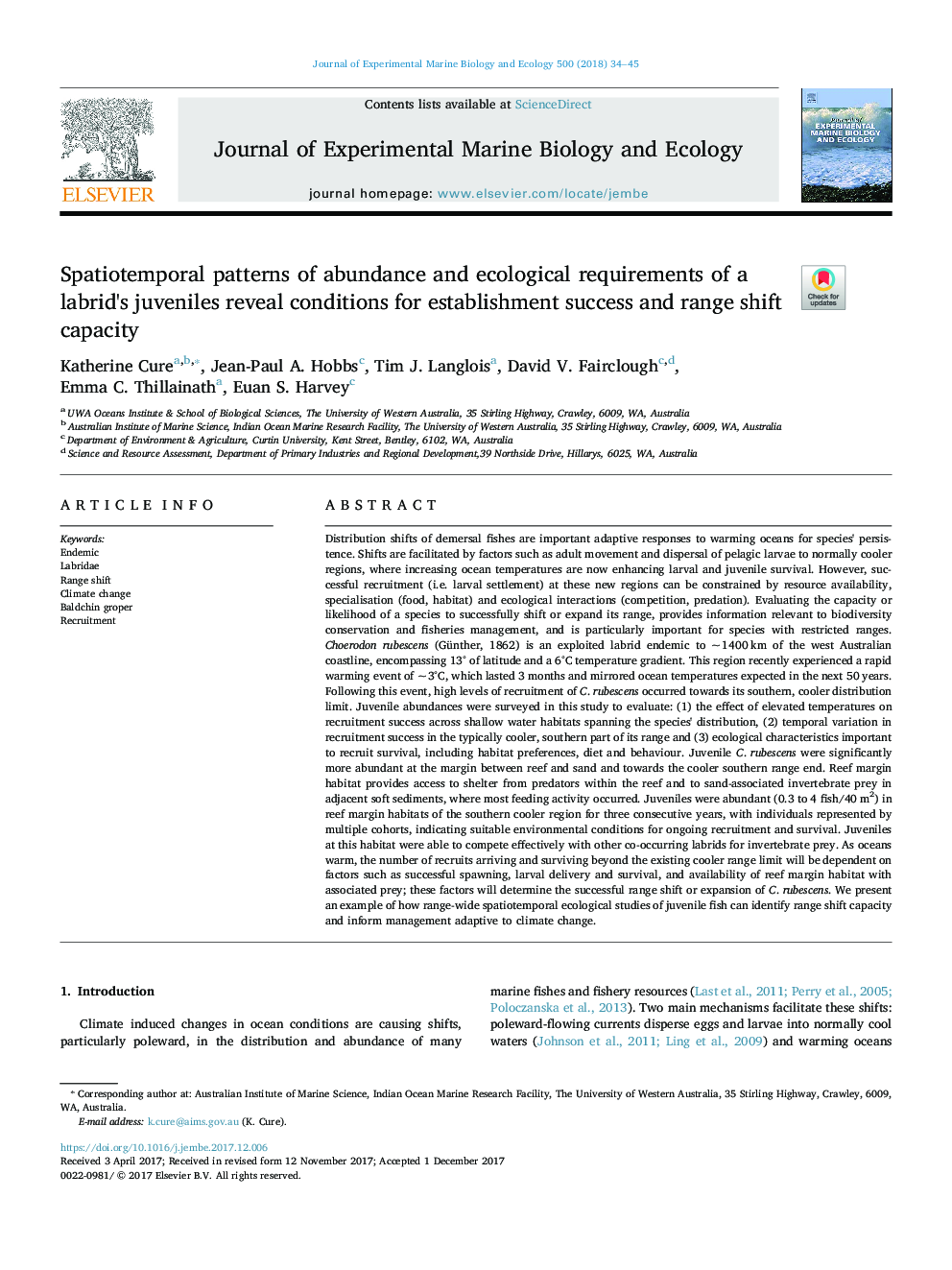| Article ID | Journal | Published Year | Pages | File Type |
|---|---|---|---|---|
| 8848997 | Journal of Experimental Marine Biology and Ecology | 2018 | 12 Pages |
Abstract
Distribution shifts of demersal fishes are important adaptive responses to warming oceans for species' persistence. Shifts are facilitated by factors such as adult movement and dispersal of pelagic larvae to normally cooler regions, where increasing ocean temperatures are now enhancing larval and juvenile survival. However, successful recruitment (i.e. larval settlement) at these new regions can be constrained by resource availability, specialisation (food, habitat) and ecological interactions (competition, predation). Evaluating the capacity or likelihood of a species to successfully shift or expand its range, provides information relevant to biodiversity conservation and fisheries management, and is particularly important for species with restricted ranges. Choerodon rubescens (Günther, 1862) is an exploited labrid endemic to ~ 1400 km of the west Australian coastline, encompassing 13° of latitude and a 6°C temperature gradient. This region recently experienced a rapid warming event of ~ 3°C, which lasted 3 months and mirrored ocean temperatures expected in the next 50 years. Following this event, high levels of recruitment of C. rubescens occurred towards its southern, cooler distribution limit. Juvenile abundances were surveyed in this study to evaluate: (1) the effect of elevated temperatures on recruitment success across shallow water habitats spanning the species' distribution, (2) temporal variation in recruitment success in the typically cooler, southern part of its range and (3) ecological characteristics important to recruit survival, including habitat preferences, diet and behaviour. Juvenile C. rubescens were significantly more abundant at the margin between reef and sand and towards the cooler southern range end. Reef margin habitat provides access to shelter from predators within the reef and to sand-associated invertebrate prey in adjacent soft sediments, where most feeding activity occurred. Juveniles were abundant (0.3 to 4 fish/40 m2) in reef margin habitats of the southern cooler region for three consecutive years, with individuals represented by multiple cohorts, indicating suitable environmental conditions for ongoing recruitment and survival. Juveniles at this habitat were able to compete effectively with other co-occurring labrids for invertebrate prey. As oceans warm, the number of recruits arriving and surviving beyond the existing cooler range limit will be dependent on factors such as successful spawning, larval delivery and survival, and availability of reef margin habitat with associated prey; these factors will determine the successful range shift or expansion of C. rubescens. We present an example of how range-wide spatiotemporal ecological studies of juvenile fish can identify range shift capacity and inform management adaptive to climate change.
Related Topics
Life Sciences
Agricultural and Biological Sciences
Aquatic Science
Authors
Katherine Cure, Jean-Paul A. Hobbs, Tim J. Langlois, David V. Fairclough, Emma C. Thillainath, Euan S. Harvey,
